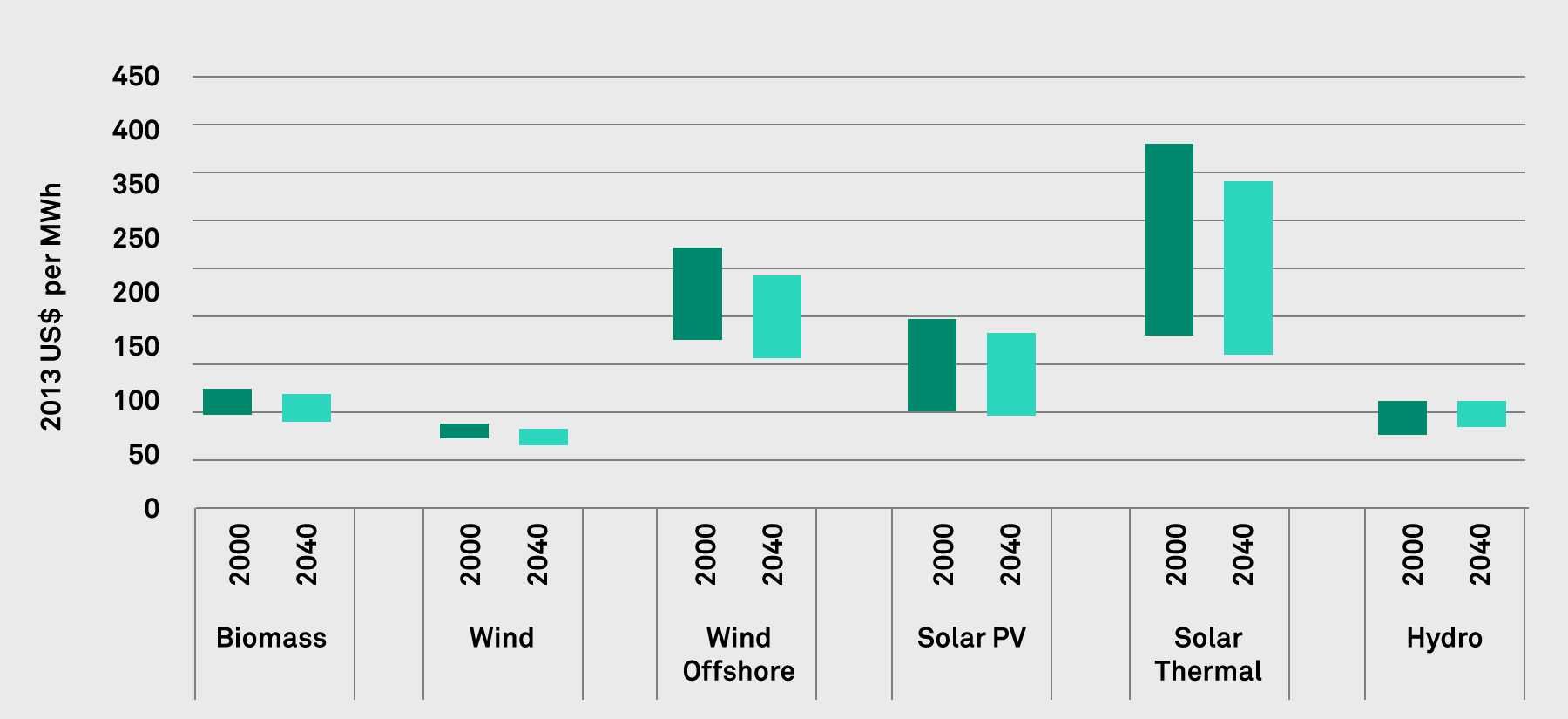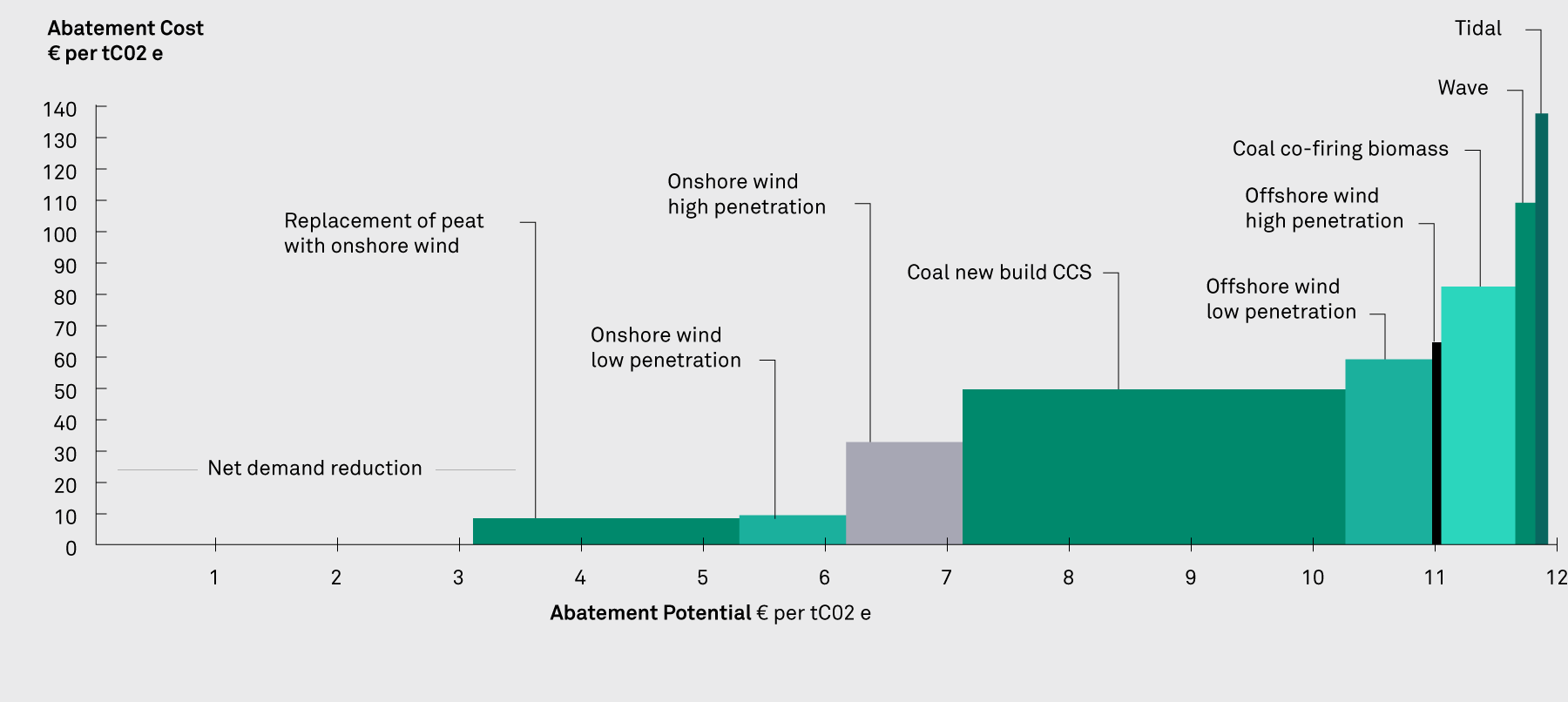What are the options if we do not want more wind?
Ireland’s choices are limited in the short term by the need to meet our agreed EU target of 16% renewables contribution to energy demand by 2020.
Irish Government policy envisages a 40% renewable energy contribution to electricity demand by 2020. The target for renewable energy in heat is 12% and 10% in transport 1. In theory we have the option of increasing the national targets for heat and transport; there is a view that we need to do just that as the long term targets for greenhouse gas reduction and renewables deployment are not deliverable by focusing solely on the electricity system. However, in 2014 Ireland was only halfway to reaching its sectoral and overall targets 2 and projections indicate we will not achieve the target in the heat and transport sectors without additional measures 3. The Department of Communications, Energy and Natural Resources (DCENR) is commissioning an economic evaluation of measures to promote renewable energy in heating applications 4.
The deployment of wind to meet the electricity element of our renewable energy target is well underway and will involve the construction of more wind-farms; which along with other renewable sources could contribute a total of 5,450MW 5 by 2020. Wind energy is supported by feed-in tariffs under the Renewable Energy Feed-In Tariffs (REFIT) I and II 6. Around 2,120MW of renewable technologies are currently being supported, including 40MW of plant supported from the first renewables scheme, the Alternative Energy Requirement (AER) 7.
But the question remains: What do we do in 2020 if we do not want more wind-farms? The answer is likely to be that we will choose the next best and most affordable alternative, then the next and so on until there is enough effort underway to be sure of reaching the target which the EU has agreed on for 2020, 2030 and beyond 8 (Fig. 4).

